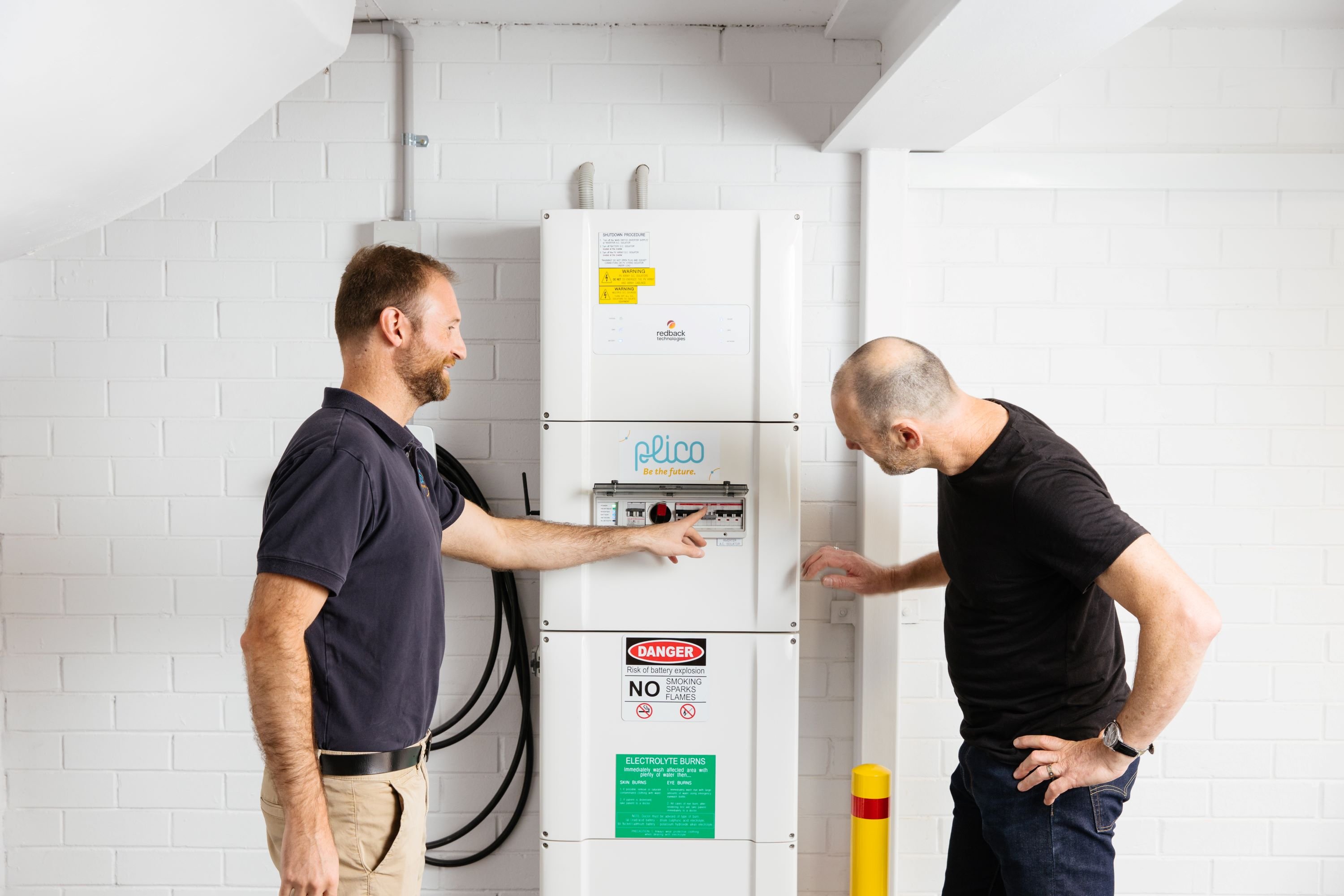Solar + battery systems are effective when using 3-phase power supplies. In these systems, three wires deliver solar power at a constant voltage, making them popular in industrial and commercial settings. 3-phase solar + battery systems utilise the standard solar system configuration but need specialised inverters and cables to handle multiple power loads.
Although 3-phase power is less common in residential applications, some households opt for 3-phase setups to help balance loads and meet higher energy demands.
So, if you have 3-phase power at your home or business, you can install a 3-phase or single-phase solar + battery system, each with pros and cons. Read on to find out how solar + battery systems work with 3-phase power.
Single-phase vs 3-phase solar systems
Regarding solar systems, there are two standard power distribution methods: single-phase and 3-phase. Both have their advantages, but it's essential to understand their differences.
Single-phase power distribution involves using a phase wire that delivers electricity to a device and a neutral wire that carries the electrical current back to the source. The voltage in a single-phase system varies cyclically in accordance with the alternating current (AC) pattern, rising and falling periodically. Since single-phase systems are engineered to handle lower amounts of electricity, they're generally used in residential environments. In fact, single-phase is the most frequently utilised power distribution system in homes.
3-phase systems, on the other hand, distribute power across three conductor wires (and sometimes a fourth neutral or ground wire). These wires are arranged 120 degrees apart, resulting in staggered AC cycles that peak at different points in time. Each wire's voltage peaks at another point in the cycle, resulting in a smooth, constant power output that never drops to zero. Power is balanced between three different loads, all linking to connected appliances. 3-phase systems are ideal for industrial and commercial settings, where more power is required.
In a 3-phase solar system, the power output is up to three times that of a single-phase solar system. While single-phase systems are more common in residential households, upgrading to a 3-phase system is possible if more power is needed. By understanding the differences between these two power distribution methods, you can choose the one that's right for your needs.
What components make up a 3-phase solar system?
The equipment that makes up a 3-phase solar + battery system is the same as a single-phase system but is designed to carry higher power loads.
3-phase solar panels
3-phase solar systems use standard solar panels, the same as single-phase systems. However, because 3-phase systems are designed to supply more power at once, a larger solar panel array may be needed to generate the necessary amount of electricity.
Learn about the different types of solar panels.
3-phase solar inverters
3-phase solar inverters are an essential component of a solar system as they convert the direct current (DC) electricity produced by solar panels into usable alternating current (AC) electricity. They are bigger than single-phase inverters and have additional hardware and software to manage the flow of electricity across the three power phases. This helps to ensure that the power output is evenly distributed between the phases, avoiding any overloading.
There are two types of 3-phase solar inverters: solar and hybrid. Solar inverters only convert electricity for immediate appliance use, while hybrid inverters can also convert electricity for battery storage.
3-phase solar batteries
Solar batteries do not need to be designed specifically for 3-phase power. However, many solar batteries only store energy from one of the three phases, which limits storage efficiency and potential savings on your power bill. Some solar batteries have two additional transformers, allowing them to store electricity from all three phases. To state the obvious: storage from three phases is triple the speed!
How do I know if I have a 3-phase power supply?
To determine if your home has 3-phase power, check your switchboard. This is usually found on the side of your house or in a cupboard inside. First, look for the main switch among the circuit breakers in the switchboard. If there is only one circuit breaker, you have a single-phase button. If three circuit breakers are joined together, you have a 3-phase switch. If you need more clarification, you can contact your electricity provider, who can tell you what type of power supply you have.
How does 3-phase solar installation work?
3-phase solar installation is similar to single-phase solar installation, that is, if you already have a 3-phase power supply at your home. If not, upgrading from a single-phase power supply to 3-phase will be the most complicated part of the process. The cost of upgrading to 3-phase is between $570 to $800 in Western Australia and can be performed by a qualified electrician.
The primary difference in 3-phase installation is the type of inverter used. A single-phase solar + battery system uses a single-phase inverter to convert the DC power from the solar panels and batteries into AC power that can be used in the home. In contrast, a 3-phase solar + battery system uses a 3-phase inverter to convert the DC power into AC power that can be evenly distributed across the three phases.
Plico uses 3-phase hybrid inverters from the Redback Smart Hybrid Inverter Range and the Alpha ESS Smile Range to ensure durability and high performance.
Alternatively, a single-phase inverter can be installed for one of the three phases with the largest load. However, this carries a higher risk of tripping out the power and doesn’t manage energy between the different phases. Additionally, these components require cables and circuit breakers to connect as a system. 3-phase solar systems employ larger, more durable cables and circuit breakers to handle the higher power output.
Installing a 3-phase solar + battery system will likely cost you more than a single-phase solar + battery system because it has larger and more expensive equipment, and installation is more complex and time-consuming. How much more will depend on your circumstances and system size.

Is solar better with 3-phase power?
Whether 3-phase or single-phase solar is the better choice depends on your individual circumstances. If you have high power demands, 3-phase power is often the best choice. This means it can be particularly beneficial for commercial and industrial buildings, homes with electric vehicles or swimming pools, large apartment buildings, or virtual power plant participants.
3-phase solar systems offer consistent voltage, even power distribution, and cost-efficient wiring. The smooth, constant voltage reduces the risk of appliance damage, and the balanced power distribution minimises the risk of short circuits. Although 3-phase solar systems require higher upfront installation costs, they use fewer conducting materials for the power they deliver.
However, 3-phase solar systems may not be the best option if you don't require a high amount of power. The components used, such as 3-phase solar inverters, are more expensive. Furthermore, greater insulation is needed to protect against higher voltages, which adds to the overall cost. If your system is ever damaged, repairs will also be more expensive due to the higher cost of components. For most households, single-phase power is more than sufficient, as household appliances typically do not require a lot of energy.
Choosing a single or 3-phase solar + battery system
Single and 3-phase solar + battery systems provide plenty of benefits, and depending on your power consumption, it may benefit you to install one. Plico has cutting-edge solar + battery systems for both 3-phase and single-phase setups.
Not sure which one is right for you? You can check out our solar + battery solutions here or call one of our experienced Plico team members on 1300 175 426 to determine what works best for your situation.
Have a question about solar + battery?


